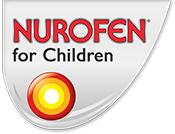Spot the Difference: Migraines and Other Types of Headache

"My headache was so bad, I think I may have had a migraine." Does this statement sound familiar? Some other types of headaches may sometimes be mistaken for migraines, and sometimes migraines can be regarded as a "bad ", not as a condition in its own right.
Why are migraines often mistaken for other types of headache?
Genuine migraine sufferers, or ‘migrainers’, know only too well that there can be differences, but as migraines and other types of headaches are all symptomised by a sharp pain in the head, it can be easy to ignore all of the other differences. To help you distinguish between them, in this article we'll examine some of the main differences between migraines, and those other types of : cluster, and tension type headaches.
differences between migraines, cluster and tension type
|
|
Migraine |
Cluster Headache |
Tension Type Headache () |
|
Occurrence |
Quite common |
A relatively rare condition |
Everyday headaches, the most common type of headache |
|
Type of pain |
Intense headache usually at the front or side of the head |
Extreme pain in one side of the head - frequently felt behind one eye. Considered more painful than migraine or TTH |
A constant ache affecting both sides of the head, as if a tight band were stretched around it |
|
Features |
Several types; · with aura (flashing lights/shapes) · without aura · aura without headache |
Come in "clusters" for example 1 to 3 attacks each day for several weeks or months, followed by a pain free interval |
Neck muscles may feel tight and there can also be a feeling of pressure behind the eyes |
|
Onset |
Flashing lights (aura) may be a warning of the beginning of a migraine |
Start quickly without any warning, but may come at around the same time each day |
Often develop slowly |
|
Frequency |
Occur from several times a week to every few years. Usually last from about 3 hours up to 3 days |
Each headache lasts about 15 minutes to 3 hours. But typically less than an hour |
Usually last about half an hour to several hours, may even last several days |
|
Effect on daily living |
May affect the ability to carry on with daily activities. Sufferers may need to lie down in a quiet, dark room |
Sufferers can feel totally incapacitated, very restless and frustrated because of the severe intensity of the pain |
Usually don't interfere too much with daily activities |
|
Other effects |
Some suffers may experience, nausea, abdominal pain, vomiting and sensitivity to light and sound |
May physically affect the eye, for example swelling or watering |
|
Telling the difference between migraines and other headaches
As you can see above, there can be distinct differences between these three types of headaches. However, if a migraine is mild and is not accompanied by an aura or nausea, it could be mistaken for a tension type headache by those unsure of the differences. Likewise, due to the potential one-sidedness of migraines and clusters, they could possibly be mistaken for each other. Please note that the table above looks at the main differences and is not intended to be a diagnosis chart. If you're ever in any doubt, always seek professional medical .
Treatment
Because of these differences, it’s important to ensure that you treat the condition appropriately. There are a number of treatments available for migraine.
|
Migraines |
Some ‘migrainers’ may need to visit their doctor and take the medications often prescribed – these are part of a group of medicines called tryptans. These can help to reverse the changes in the brain that are believed to be involved in causing migraines. Sufferers may also require medication to reduce nausea and vomiting. Those with mild to moderate migraines may receive relief from over-the-counter medications, such as Nurofen Migraine Pain. This product contains ibuprofen lysine, which is quickly absorbed into the body to help provide fast acting pain relief.
|
|
Cluster Headaches |
Treatments for cluster headaches can be aimed at relief or prevention. Sumatriptan, for example, can be given by self-injection in order to provide pain relief very quickly. Some sufferers also get relief from inhaling oxygen regularly throughout the day at home. For prevention, treatments such as verapamil or lithium may be prescribed, but usually only under strict guidance and specialist monitoring.
|
|
Tension Type Headaches |
Tension type headaches are associated with the muscles around your head, neck and face. Substances called prostaglandins are released at the site of muscle strain and stimulate pain receptors, causing you to feel the pain around your head. Therefore treatments aimed at preventing the production of prostaglandins can help to relieve tension type headache pain. Nurofen, for example, contains a primary active ingredient called Ibuprofen, which has been scientifically established to act by inhibiting the formation of prostaglandins in muscles, like those around your head and neck. So it targets the source of pain. |
If you are ever in any doubt about your headaches, always get advice from a doctor and/or a pharmacist. If your headache has resulted following a head injury and it becomes severe, or if you experience visual problems, fever, nausea or slurred speech, contact a doctor without delay.
Information sources for this article:
http://www.nhs.uk/conditions/headache/Pages/Introduction.aspx
http://www.nurofen.co.uk
http://www.ncbi.nlm.nih.gov/pubmedhealth/PMH0072551/
